I met Antti Laitinen last year during my HIAP residency in Helsinki. I caught up with him at the vernissage of the Venice Biennale to ask him a few questions about his work in the Finnish pavilion.
AM: Could you tell me about the performance Tree Reconstruction that you carried out during the opening of the Venice Biennale? Was there a special symbolism in carrying out this work in the context of a sinking Venice?
AL: I felled five birch trees in Finland, chopped them up and transported them to Venice. In front of the pavilion I tried to build them back as trees. I was using only nails and a hammer so they look more like Frankenstein trees than the originals. Of course you can see the work differently in Venice than in some other place but I don't think there is a special symbolism for Venice.
AM: Your work Forest Square, commissioned for the Biennale, was perhaps your most epic work yet. Could you tell me about the painstaking process of breaking down and sorting an area of forest into its constituent parts? Is the physical labour and time commitment of such a herculean task integral to the meaning of the work? Do you see your actions as creating a system of reverse entropy? Is this work the culmination of your use of the great Finnish outdoors as your studio?
AL: In Forest Square, I removed a 10 x 10 metre piece of forest and sorted it all into different materials: soil, moss, wood, pines, etc. Then I rebuilt this piece of forest, and arranged it by colour. The piece of forest had exactly the same size as the original forest. In Venice I am showing photos of this work. Forest Square is my most laborious work so far. I like to use physical labour in my works but it isn't a main theme normally. It is just my way of working. Many times I have worked outside in the forest or sea. Using these spaces like a large studio. Forest Square is one way to use it. Next time I’ll do something different, I think.
AM: How was the experience of representing (with Terike Haapoja) your country at Venice? Are you starting work on your next project immediately or will you take a holiday?
AL: It was nice experience. I heard six months before the opening that I had been selected for the biennale. There was lot of work to do but we managed to make everything ready. I really liked that the other artist was Terike. She is my old friend and I like her work. I still have one exhibition at the end of the summer but after that I need a holiday. Then I’ll start to think about what my next project could be.
----
This year Finland presents two solo exhibitions, under the title Falling Trees, Terike Haapoja in the Nordic Pavilion and Antti Laitinen at the Finnish Alvar Aalto Pavilion, both curated by Gruppo 111. The curators’ concept was sparked by an unexpected encounter between nature and art, a tree falling on the Aalto pavilion in October 2011 and damaging the building and the artworks within. http://www.frame-finland.fi/fallingtrees/
In his exhibition Laitinen presents two new installations Forest Square and Tree Reconstruction and a selection of earlier work. For Forest Square Laitinen cleared a ten metre square area of Finnish forest. He transported all the organic material to a warehouse which he made into a sorting centre. Over five months he undertook the mentally and physically exhausting process of gradually separating the matter into its constituent parts by hand, using a range of tools from axe to vacuum cleaner. Trunks, branches and 400 baskets of undergrowth were sorted into wood, needles, moss and soil, in freezing conditions. He then organised these categories according to colour. Undertaking this intense taxonomic inventory of a representative area of forest also questioned the model of labour and production in capitalist society.
The culmination of the project is hard to take in and the resultant large photograph is made of sixty images stitched together. Its composition is an homage to the pure abstraction and utopian ideal of spiritual harmony of the De Stijl movement. Laitinen has turned the chaos of nature into a heroic architectural structure with the logic of a mathematical diagram.
This struggle against the forces of nature feels especially poignant in Venice, an artificial structure built on a lagoon which is gradually claiming back its land. Its foundations are built on tree trunks sunk into the mud and its early existence was reliant on the traffic of wooden boats. In Tree Reconstruction Laitinen transported pieces of five birch trees from Finland and nailed them back together on the lawn outside the Aalto Pavilion, in a kind of resurrection. Laitinen describes them as Frankenstein trees. The process of remaking them recalls the modus operandi of the art and natural history museums or botanical gardens of Europe and America or the artificial ski slopes of the Gulf. In his talk at the ICA on midsummer, Laitinen described the pleasing moment a bird settled on his rebuilt tree.
The theme of the resurrected tree is one the artist has returned to on several occasions. In Puzzle (2007) he carved logs into chips and then glued them back together again and in Forest Composition (2009) he created an installation of trees held together with cable ties. These attempts at reconstruction are both humorous and poignant and warn us against the triumphalism of technology. Trees are emotive subject matter and carrying out works in different countries has exposed the artist to varying attitudes to trees. The British, for example, are sentimental about individual trees but oblivious to wider environmental issues. As catalogued in J.G. Frazer’s comparative study of magic and religion The Golden Bough, trees were worshipped as gods in pagan times. Some of this history pervades in the still prevalent superstition of ‘touching wood’ to ward off evil.
Laitinen and Terike Haapoja’s work complements each other thematically. Haapoja has turned the usually open-to-the-elements space of the Nordic Pavilion into a black box, turning day into night and planted it with trees to create what feels like a subterranean garden-laboratory. Her technological cave garden is a meeting place of different discourses and life forms wired to each other so as to from, in the curators’ words, ‘a system of polemical metabolic and allegorical exchange’. One of its most haunting elements is the infrared film of animals that have just died, capturing the heat leaving their bodies. Haapoja challenges us to question the centrality of the human subject within nature and the role of technology in shaping our worldview, inviting an open dialogue between art, natural science and environmental ethics.
To celebrate Laitinen’s participation in Venice his London gallery Nettie Horn put on a solo show (21 June – 27 July) which included the Forest Square project and a selection of past works. http://www.nettiehorn.com/01Antti_Laitinen.htm
In his work, Laitinen deploys a philosophy of the absurd as defined by Albert Camus in his 1942 The Myths of Sisyphus: ‘man’s futile search for meaning, unity, and clarity in the face of an unintelligible world devoid of God and eternal truths or values’. Although he presents his work as mock heroic, Laitinen frequently succeeds in the absurd tasks he sets himself through acts of impressive endurance and skill and the sweat of his brow.
Laitinen uses the landscape of his native country as his studio and to provide his materials and inspiration. Along with trees, islands, water and ice appear frequently in his work. In Growler (2009) Laitinen rowed a homemade iceberg he had created from salvaged ice the winter before across the sea until it melted. He again used ice as a sculptural material in Lake Deconstruction (2011), in which white blocks of ice create a Minimalist sculpture, and his Moses-like Attempt to split the sea (2006). With shades of Bas Jan Ader, in Bark Boat (2010), he sailed precariously across the Baltic Sea in a boat made of bark collected from the forest floor.
No man is an island, or so they say. In Voyage (2008) Laitinen rowed a comic looking palm tree island around in the Baltic Sea, the Mediterranean and then the Thames, until he was stopped by police outside MI5. It’s My Island (2007) consists of photographic and video documentation of Laitinen’s laborious construction of an island in the Baltic Sea, using only a spade, sand and sacks. Over three months he individually filled 200 bags with sand and dragged them through the waves to the same spot in the sea. The work makes a joke of ownership and territory as well as playfully recalling Robert Smithson’s seminal land work Spiral Jetty.
In Bare Necessities (2002) Laitinen explores the romantic notions of nature held by many city-dwellers, by living for four days in the Finnish landscape without water or clothes and recording his experiences. To a visitor, the Finns seem to have a genuinely close relationship with nature and their Northern climate, they celebrate the pagan festival of midsummer, Juhannus, with gusto, love to strip off for the sauna and lake-swimming, and spend as much time as possible outdoors during the long summer days. Bare Necessities pokes gentle fun at the popular motif in Finnish culture of escaping into the wilderness, undercutting any macho posturing with a reference to Mowgli from the well-loved Disney version of Kipling’s The Jungle Book.
In Self-portrait on the swamp (2002), body completely submerged with one hand extended holding the shutter cable, the artist resembles a zombie being reborn or a preserved ‘bog man’, a pagan sacrificial victim. This strain in Laitinen’s work which harks back to primeval man appears in Sweat Work (2004). The artist ran round and round in a giant hamster wheel then pushed his sweaty, naked body onto photographic paper to create a series of self portraits, which recall Neolithic cave paintings, as well as more recent works by Yves Klein and Ana Mendieta.
A Calvinist work ethic is another integral part of Finnish culture. The value of work is measured by the amount you sweat performing it, something Laitinen played with initially in Sweat Work. In Three Stones (2004) the artist presents the viewer with three stones he has excavated, one he found after digging for seven minutes, one after seven hours, and one after seven days. Their appearance is very similar but is the last stone more precious? Does the increased labour affect its value? Laitinen is inviting us to consider larger questions about how we assign aura tic power to objects once we designate them artworks and how we then position them within value systems. This exploration extends into the recent series of Untitled (nails and wood), totemic objects whose pristine beauty belies the painstakingly difficult circumstances of their production. Every inch of the surface of these pieces of wood is covered by nail heads, until they resemble artefacts recovered from some remote forest tribe.
What to see at the Venice Biennale.
In the Arsenale: My highlight was the area created by Cindy Sherman which I loved. In the national pavilions, the UAE chose a well deserved representative, Mohammed Kazem, a crucial link between Hassan Sharif and the younger generation of Emirati artists, who presented an ambitious installation. Turkey offered Ali Kazma’s fascinating multi-screen meditation on the controls placed on the body while Georgia constructed a ‘kamikaze loggia’, a parasitic structure, onto the Chinese Pavilion. The Instituto Italo-Latino Americano pavilion was as good as ever.
In the Giardini: I enjoyed Mathias Poledna’s delightful animation at Austria, Finland’s tress as discussed above, Jeremy Deller’s steel band playing Bowie covers at Great Britain, Stefanos Tsivopoulos for Greece, questioning the history of money. As well as Zsolt Asztalos’s collection of fired but unexploded bombs at Hungary, Spain’s Lara Almarcegui’s ruins in reverse, Alexandra Pirici and Manuel Pelmus performed Immaterial Retrospective of the Biennale in the Romanian pavilion, intriguing sculpture and video by Vladimir Peric and Milos Tomic in the Serbian Pavilion and everybody’s favourite, Vadim Zakharov’s performative installation Danae in the Russian Pavilion.
In the city: The Iraq Pavilion presents thought-provoking works in a beautiful apartment serving tea, I was very taken with the cardboard furniture by duo WAMI. Don’t miss The Future Generation Art Prize; in particular Meiro Koizumi’s moving video about a Japanese kamikaze pilot who failed to be killed alongside his friends during the Second World War has stayed with me. Catch young talent from Saudi Arabia in RHIZOMA: Generation in Waiting curated by Sara Raza and experience Thomas Zipp’s eerie research institute into hysteria and schizophrenia, complete with padded cell, at Palazzo Rossini.
Ali MacGilp
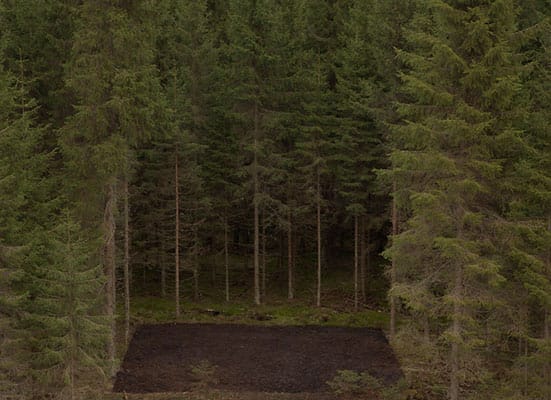
Antti Laitinen Forest Square II 2013 C-print, Diasec 70 x 105cm
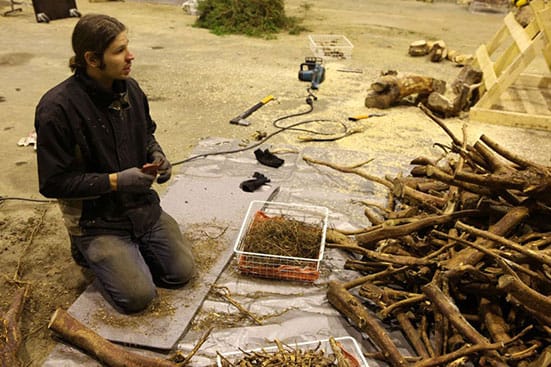
Antti Laitinen Forest Square work in process
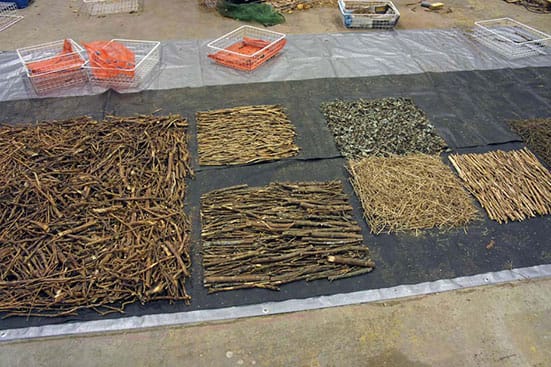
Forest Square work in process

Antti Laitinen Forest Square III 2013 C-print, Diasec 180 x 180 cm
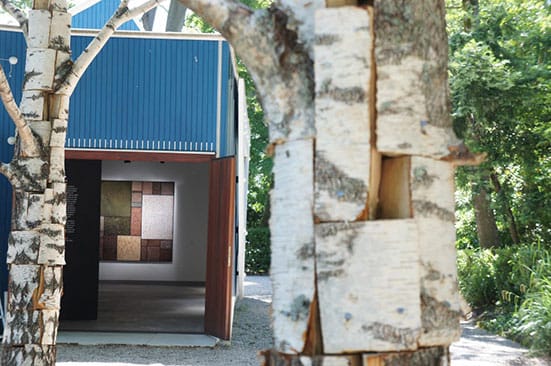
Antti Laitinen Finnish pavilion Forest Square and Tree Reconstruction
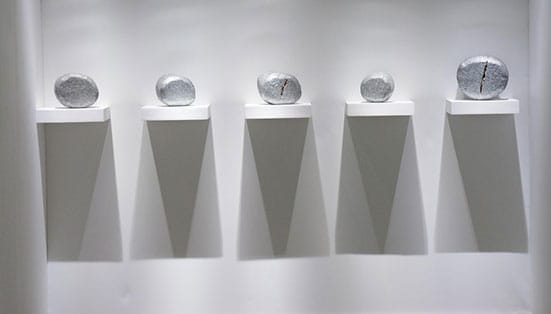
Antti Laitinen Finnish Pavilion Untitled (Nails and Wood)

Antti Laitinen Untitled Antti dug a hole and collected the stones he found after seven minutes of digging, seven hours and seven days.

Antti Laitinen Self Portrait on the Swamp, 2006 Diasec mounted C-type print, 160 x 115 cm
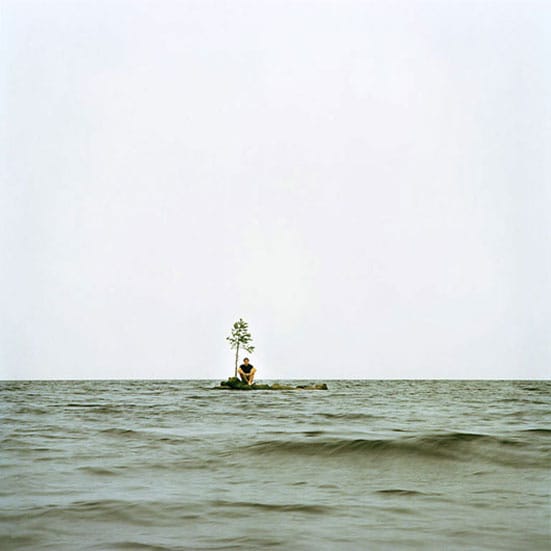
Antti Laitinen It's My Island VI, 2007 Diasec mounted C-type print, 115 x 115 cm